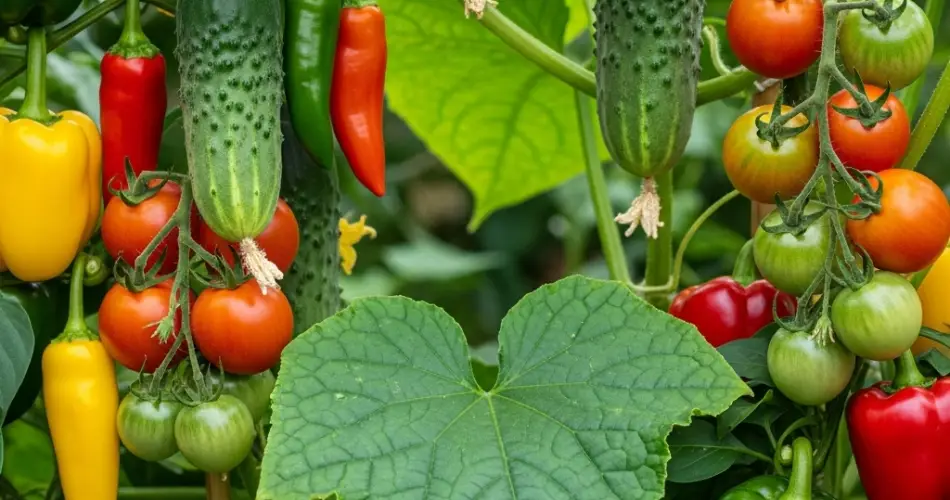June is a crucial month in the vegetable garden. Plants like cucumbers, tomatoes, and peppers are actively growing, flowering, and beginning to form fruit. But if they’re lacking nutrients at this stage, yields can drop, and fruit set may be delayed or uneven. To help your plants thrive and produce abundantly, a simple, natural feeding can make all the difference—especially when applied in early to mid-June.
This fast-acting tonic encourages plants to flower more profusely and set fruit faster. It’s completely organic, easy to make at home, and provides the exact nutrients your plants need right now. Gardeners report that after just one application, plants respond with a surge of blossoms and begin fruiting more heavily.
Why June Feeding Is So Important
By June, your warm-season vegetables should already be established and growing well. But this is also when they enter a high-demand phase, requiring more nutrients to support:
-
Flower formation
-
Pollination and fruit set
-
Continued leaf and root growth
-
Resistance to summer heat stress
If nutrients are lacking, especially phosphorus and potassium, plants may flower less or drop their blooms. Leaves may turn pale or curl, and fruit production slows down.
Timely feeding in June gives plants the fuel they need to maximize yield during their most productive period.
The Natural Fruit-Boosting Tonic
This homemade liquid fertilizer delivers a balanced boost of nutrients tailored to flowering and fruiting plants. It’s made from common, natural ingredients that work together to:
-
Stimulate flowering
-
Improve fruit set
-
Strengthen plant immunity
-
Encourage even ripening
Ingredients:
-
1 tablespoon of wood ash (rich in potassium and trace minerals)
-
1 tablespoon of sugar
-
10 grams of dry yeast (one packet)
-
1 liter of warm water (around 30–35°C / 86–95°F)
Optional (for extra benefit):
-
1 tablespoon of whey or fermented milk (natural probiotic)
-
A few drops of aloe vera juice or seaweed extract
Instructions:
-
In a container, mix the sugar and yeast into the warm water. Stir until fully dissolved.
-
Add the wood ash and any optional ingredients.
-
Let the mixture sit at room temperature for 2–3 hours to activate fermentation.
-
Before applying, dilute the mixture with 4 liters of water (for a total of 5 liters of working solution).
This makes enough to feed approximately 10–15 plants, depending on size.
How to Apply
-
Water the base of each plant with 300–500 ml of the diluted solution.
-
Apply in the early morning or late evening, when the soil is moist and temperatures are not extreme.
-
Avoid getting the solution on leaves or fruit.
-
Repeat every 10–14 days during the active flowering and fruiting phase (June through early July).
Why This Works
Each ingredient in this mix plays a vital role:
-
Yeast: A natural source of B vitamins and growth stimulators. It enhances root activity and promotes vigorous new growth.
-
Sugar: Feeds beneficial microbes in the soil, improving nutrient availability.
-
Wood ash: A key source of potassium, which is essential for flowering and fruit formation. It also contains calcium and magnesium for strong plant tissue.
-
Optional additions like whey or aloe vera support microbial life and boost disease resistance.
Together, these elements create a balanced ecosystem in the soil that supports heavy fruiting and sustained plant health.
Best Crops for This Feeding
This tonic is ideal for:
-
Cucumbers – Stimulates flowering and uniform fruiting
-
Tomatoes – Encourages more flower clusters and larger fruit set
-
Peppers – Improves pod development and plant resilience
-
Zucchini, melons, eggplants – Also respond well to this balanced nutrient boost
Signs Your Plants Need This Feeding
If you notice any of the following, it’s time to act:
-
Plants are flowering, but not setting fruit
-
Flowers fall off prematurely
-
Growth is stalling or leaves are pale
-
Fruits are slow to develop or appear misshapen
Even healthy-looking plants will benefit from this feeding to reach their full yield potential.
Additional Tips for Maximum Yield
-
Mulch around the base of your plants to retain moisture and regulate temperature.
-
Remove faded flowers or damaged leaves to direct energy toward fruiting.
-
Water consistently, especially during hot days, to avoid fruit cracking or blossom-end rot.
-
Support climbing plants (like tomatoes and cucumbers) to keep fruit off the soil and improve airflow.
Final Thoughts
Don’t wait until your plants show signs of stress. By giving this all-natural feed in early June, you set the stage for a harvest that’s not just plentiful, but also earlier and of higher quality. Whether your garden is in containers, raised beds, or traditional rows, this simple homemade solution delivers big results.
Try it once—and watch your cucumbers, tomatoes, and peppers burst into bloom and fruit like never before.



